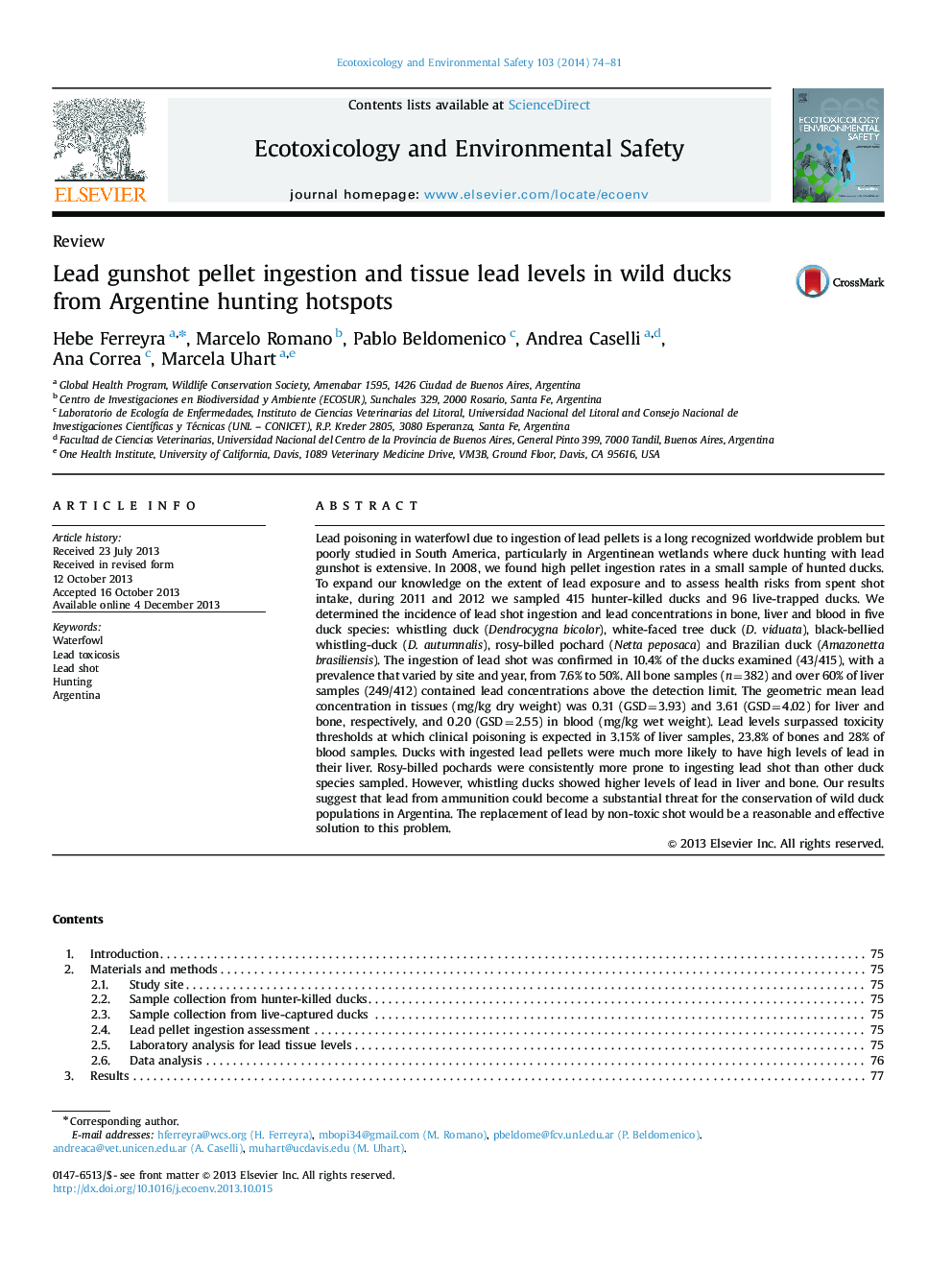| کد مقاله | کد نشریه | سال انتشار | مقاله انگلیسی | نسخه تمام متن |
|---|---|---|---|---|
| 4420196 | 1618960 | 2014 | 8 صفحه PDF | دانلود رایگان |
• The overall prevalence of ingestion of lead shot in Argentinean ducks was 10.4%.
• All bones, 60% of livers and 28% of blood samples had lead concentrations above the detection limit.
• A large proportion (27%) had levels above those known to cause toxicosis.
Lead poisoning in waterfowl due to ingestion of lead pellets is a long recognized worldwide problem but poorly studied in South America, particularly in Argentinean wetlands where duck hunting with lead gunshot is extensive. In 2008, we found high pellet ingestion rates in a small sample of hunted ducks. To expand our knowledge on the extent of lead exposure and to assess health risks from spent shot intake, during 2011 and 2012 we sampled 415 hunter-killed ducks and 96 live-trapped ducks. We determined the incidence of lead shot ingestion and lead concentrations in bone, liver and blood in five duck species: whistling duck (Dendrocygna bicolor), white-faced tree duck (D. viduata), black-bellied whistling-duck (D. autumnalis), rosy-billed pochard (Netta peposaca) and Brazilian duck (Amazonetta brasiliensis). The ingestion of lead shot was confirmed in 10.4% of the ducks examined (43/415), with a prevalence that varied by site and year, from 7.6% to 50%. All bone samples (n=382) and over 60% of liver samples (249/412) contained lead concentrations above the detection limit. The geometric mean lead concentration in tissues (mg/kg dry weight) was 0.31 (GSD=3.93) and 3.61 (GSD=4.02) for liver and bone, respectively, and 0.20 (GSD=2.55) in blood (mg/kg wet weight). Lead levels surpassed toxicity thresholds at which clinical poisoning is expected in 3.15% of liver samples, 23.8% of bones and 28% of blood samples. Ducks with ingested lead pellets were much more likely to have high levels of lead in their liver. Rosy-billed pochards were consistently more prone to ingesting lead shot than other duck species sampled. However, whistling ducks showed higher levels of lead in liver and bone. Our results suggest that lead from ammunition could become a substantial threat for the conservation of wild duck populations in Argentina. The replacement of lead by non-toxic shot would be a reasonable and effective solution to this problem.
Journal: Ecotoxicology and Environmental Safety - Volume 103, May 2014, Pages 74–81
